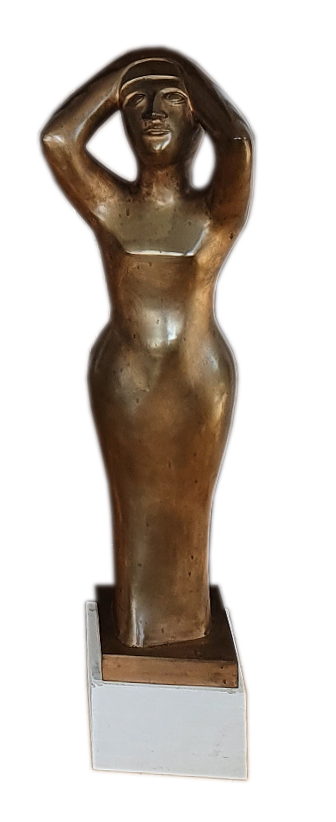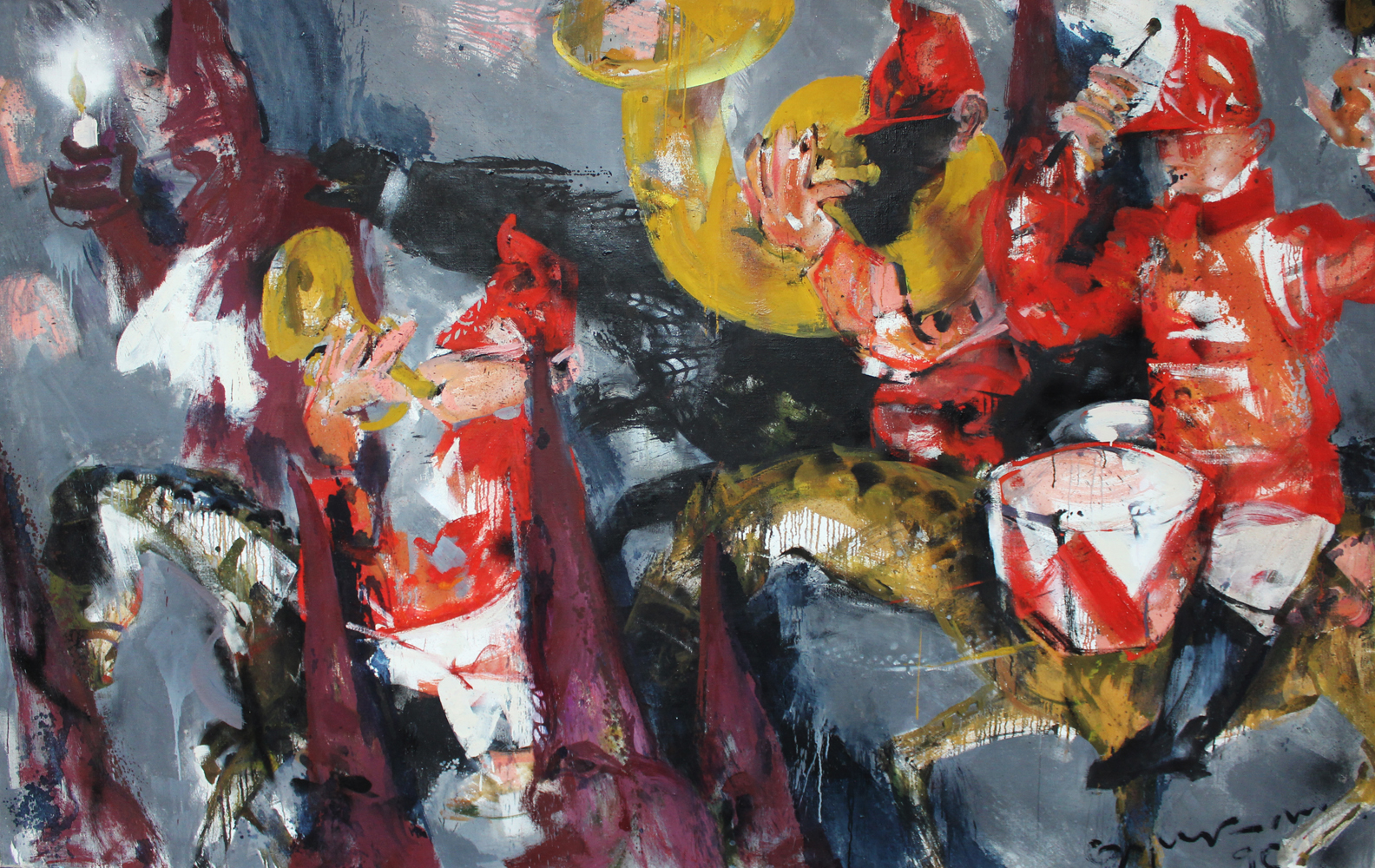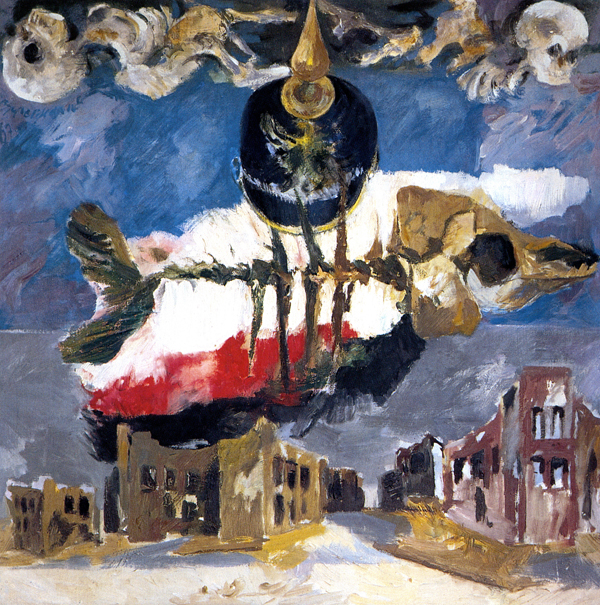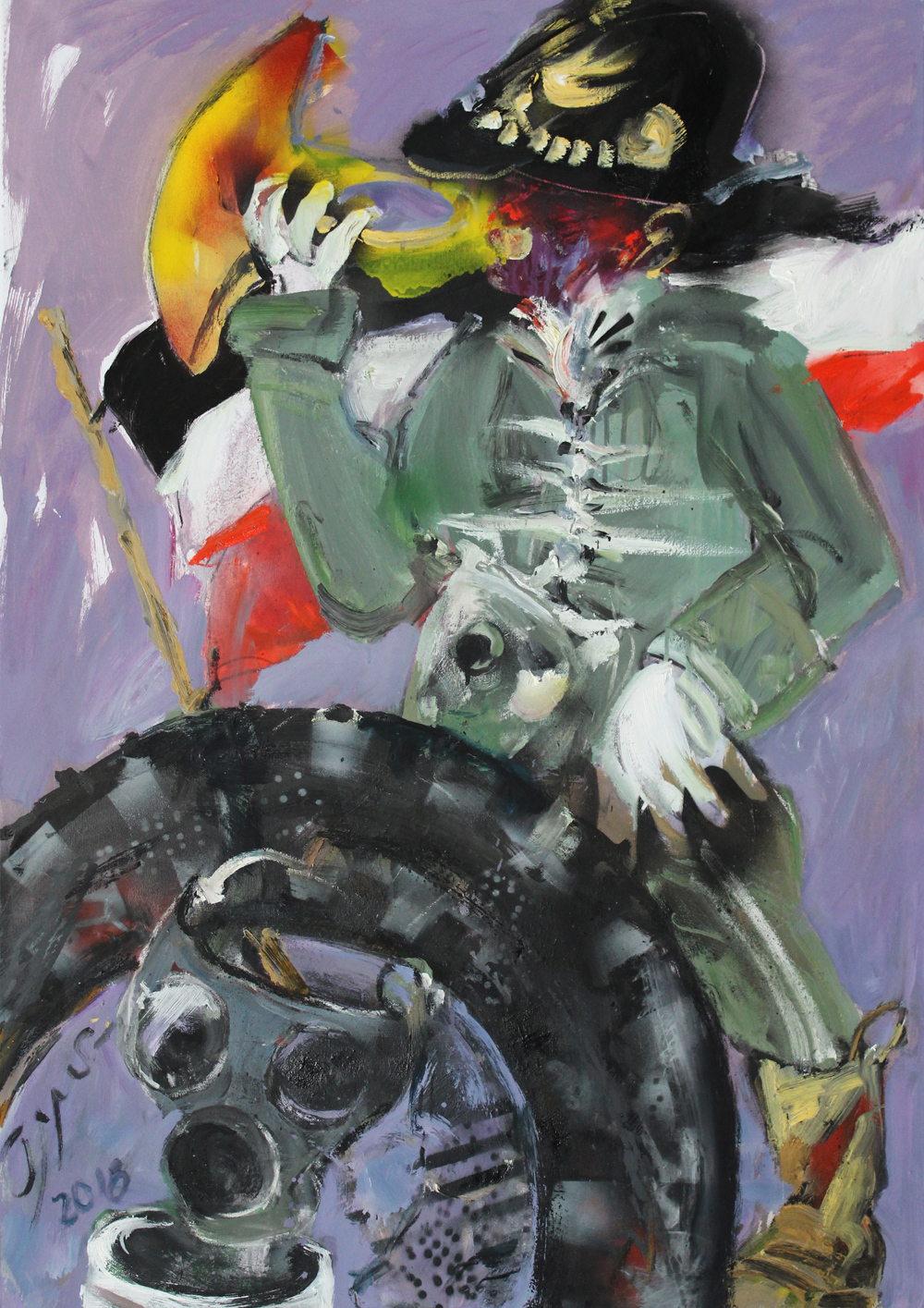PROF. DR. KERSTIN WITTMANN-ENGLERT - MEMORIAL CELEBRATIONS 18.09.2022
Tribute to the oeuvre - The painter Karl Oppermann
(translation, original in German language)
Dear Daniel, dear Felix, and dear Mauritz, dear Oppermann family,
dear friends, dear companions of Karl Oppermann,
I have been asked by you, Daniel, Felix, and Mauritz, to speak about Karl Oppermann as a painter. This is a request I am very happy to fulfill here, especially after delving deeply into his artworks and himself through his biography “Karl Oppermann – Prusiano-Latino,” published in 1995.
Firstly, a brief note: As an art historian, I have extensively studied and published on two artists: Rembrandt and Karl Oppermann.
Do not worry, this will not be a comparative analysis. However, there is an important difference that I want to mention for my discussion of these themes: when I wrote about Rembrandt, he was already a long-established figure in history, whereas the biography of Karl Oppermann was written in dialogue with him. As banal as this observation may seem, it was sometimes challenging. Because dialogue also means “interference.” For instance, at the beginning, there was a struggle over the form of the text: I had a more academic presentation in mind, while he leaned towards an anecdotal, personal perspective. Upon revisiting the biography for the preparation of this speech, I think we both managed to “assert” ourselves.
Enough with the preamble. I would like to address three aspects:
Firstly: Karl Oppermann’s education and his critical assessment of his time, particularly regarding the artistic trends of the 1950s.
Secondly: Taking a look at selected series in terms of motifs and style. I am guided by a quote from Ivo Andritsch, which Karl placed at the beginning of the second part of his memoirs: “Art is similar to life; it is like a game but fundamentally, it is a damned serious thing; the more it resembles a game, the more serious it becomes.”[i]
Thirdly: Concluding with the question of his artistic style and a quote from Karl Oppermann himself, which needs no additions.
Let’s begin with the first part, the early years, and thus his education and critical remarks about his time: Karl Oppermann studied at the art school where he would later become a professor: the University of the Arts, formerly known as the University of Fine Arts, starting in 1975 (and since 2001, the University of the Arts).
He studied painting under Curt Lahs, sculpture under Ludwig Gabriel Schrieber, and became a master student of the painter Ernst Schumacher. I mention these disciplines because they hint at a “foray” into sculpture. Oppermann’s skill in sculpture is evidenced by the figure “Die Stehende” (“The Standing Woman”), created in plaster in 1952 and cast in bronze 40 years later.

Die Stehende, Bronze, 1952
A copy of it stands next to my desk and is often explored: Clear in its contours, flowing in its forms, this work is impressive and expressive. It clearly reveals the influence of his teacher. However, his own style had not yet fully emerged.
In 1954, Karl Oppermann completed his exam to become an art teacher with a craft teacher’s certificate under Ludwig Gabriel Schrieber, and from 1956 onwards, he worked as a freelance painter.
In our initial conversations, Karl Oppermann often returned to the artistic trends of his time and the dichotomy of objectivity and abstraction associated with the names Karl Hofer and Will Grohmann. Understandably, this topic occupied him greatly. Because his career as a painter coincided with the time of increasing abstraction in visual arts. In the 1950s, Karl Oppermann worked experimentally with materiality and recognizable motifs that were heavily abstracted, not representational, as a series of still lifes demonstrate. These are (expressively) strong works, often painted in oil on hardboard, expressing mainly the influence of Cubism, although they also represent initial independent forms of expression. In a sense, one could already speak of small series, but the serial development and exploration of a theme began a bit later.
This brings us to the second part and selected series. Let us remember the quote from Ivo Andritsch that Oppermann cited at the beginning of the second volume of his memoirs (“Wechselgesang”): “Art is similar to life; it is like a game but fundamentally, it is a damned serious thing; the more it resembles a game, the more serious it becomes.”
Why is this quote so important to me at this point? Because Karl Oppermann’s paintings often exhibit a lightness in style that perhaps does not counteract, but in my view, sometimes overly softens the severity and seriousness of the themes.
An early motif of the painter is the butterfly. Karl Oppermann mostly found his motifs in his own experiences. And among these experiences was the city of Berlin, the family’s place of residence, which he contemplated in various cycles. Here is a quote from the artist himself: “In the early Berlin paintings … it was essential for me to see the destruction of the old imperial capital in the context of its Wilhelmine past, hence also a preference for this historical architecture.”[ii]
In these early Berlin pictures, Karl Oppermann wanted to examine the destruction of the old imperial capital in the context of its history, particularly its Wilhelmine past. This is why he had a preference for this historical architecture. Karl Oppermann sought to engage with the political and social issues of his time. This is evidenced by his early butterfly paintings, where the butterfly, drawing on its ancient symbolism, became a cipher for becoming and passing away. The transition between these two states could be fluid. In the context of the Soviet invasion of Czechoslovakia in August 1968, the butterfly transformed over the course of a month into a dark moth, symbolizing destruction; this was an impressive way of using two motifs (butterfly-moth) reciprocally, with each reflecting the other. They also appear simultaneously in the Berlin pictures: the butterfly could symbolize both the partial destruction of historical Berlin and the hope of overcoming the thankfully fallen Berlin Wall. Oppermann staged the butterfly in its fragility as the ideal counterpoint to the concrete boundary. … And as a brief foray into the present: The butterfly has returned in Oppermann’s recent works. Under the Spanish name for butterflies – “Mariposas” – the creature flies over mountains, forests, and water, now firmer and more present in the representation, stronger and more recognizable in its structure. Compared to the earlier butterflies, these appear more abstracted and yes, lighter. … Yet, as the poet-painter Karl Oppermann aptly wrote, “Lightness? … Butterflies also weigh.”[iii]
The changed context also allows the butterfly to mutate: In the sixties and seventies, metamorphosis was an important impulse, which fades into the background or disappears in the more recent butterfly representations.
The second series of paintings I want to recall is dedicated to “Macuma”: with its bright colors and almost sketch-like manner in which the figures are depicted, reminiscent of Oppermann’s virtuoso watercolor technique with its translucent color application. “Macumba” – behind this mystical term of Angolan origin lies an Afro-Brazilian cult of the gods with a dance that builds to ecstasy through drum rhythms. Bright colors, fleeting strokes, and the theme of ecstasy complement each other perfectly.
It should be noted that this was already Oppermann’s fourth trip to Latin America. While during the initial visits in the early seventies to Venezuela and Colombia, he was more enamored with the European-influenced, colonial aspects, in 1987 in Brazil, the painter turned to the exotic culture of Latin America. Fascinated by the colorful world of Brazilian religiosity and folklore, Karl Oppermann, as the art historian and gallerist Ernst A. Busche aptly put it, “sought the human foundation of this initially foreign world and the connection to our seemingly ‘more civilized’ own culture.”[iv] The images inspired by the white magic of “Macuma” are connected to other series such as “Hunters and Hunted” and “Landfall,” created around the same time.
The series “Landfall” takes us to Spain, specifically Barcelona, where Karl Oppermann enjoyed life for many years with his family on the bustling “Rambla de las Flores.” Undoubtedly, this was a pulsating counterpoint to Berlin and Veckenstedt in the Harz. Initially inspired by sailors in Spain, he later turned to the festivities of the “Semana Santa” (Holy Week), where drama and mystery intertwine.

Semana Santa “Musik zu Pferd”, Öl/Lwd. 1991, 220 x 150
Again, it is not the realistic depiction of events that interested Karl Oppermann.
Instead, it is the mystical character of the “Semana Santa,” focused on the hooded figures accompanying the procession, which appear as marginal figures in his paintings. It is not the specific story or person that is told or portrayed here. It is impressions that develop into fictional representations, which reveal Oppermann’s joy in using color and brush: seemingly quickly sketched color surfaces, painted or dripped, contourless figures and objects against indistinct backgrounds.
After reunification, Karl Oppermann made his way to the Harz Mountains, to his ancestral roots. Veckenstedt replaced Berlin as the family’s place of residence. And with this new place came new themes. An inner dialogue with Germany, its history, and present began.
A stark change of themes compared to what was previously depicted on canvas. Here’s what Karl Oppermann said about this: “Starting from the wave of former Nazis (Alt-Nazis) and new Nazi sympathizers (Neo-Nazis), I read in the Spanish newspaper in January [1994] that the old comrades of the armed border forces were also holding their comradeship meetings again. Suddenly, there was a unity of old and new comrades – a unity connected by narrow-mindedness, petit-bourgeois mentality, and beer-table manners.”[v] As a result of this shocking realization, Oppermann formulated the theme of “comradeship meetings.” It is less about the individual than a type represented, evidenced by the more frequent use of stencils – for hands, but especially for profile heads. Oppermann’s repertoire of engaging with reunited Germany is vast. One could say this is also a multifaceted “el mundo – un teatro,” to echo the title of the exhibition opened yesterday in the Hedersleben Monastery, which Karl Oppermann himself curated.
Now, let’s briefly touch on the last two decades. In my perception, there are fewer new themes than new perspectives (also on previous themes) that speak through the artworks. This is exemplified by a comparison of two paintings from 1967 and 2018:

Nach Ostland ging unser Ritt, Öl/Lwd. 1967
From 1967 comes the oil painting “To Eastland Our Ride Went,” which shows an oversized fish skeleton in front of a black-white-red imperial flag under a pickelhaube, between ruins at the bottom and human skeletons at the top of the image: a reflection on the imperial dreams of the empire and the boastful statement of Wilhelm II that Germany’s future lay on the water.
In 2018, the oil painting “State Trumpeter” was created – with corresponding attributes: In front of the trumpeter is a vertically oriented fish skeleton, which in its sketch-like representation is initially not noticeable, a pickelhaube on the head of the trumpeter, and again in the background, the black-white-red imperial flag.

Staatstrompeter, Öl/Lwd. 2018, 70 x 100
Instead of ruins and skeletons, there is a gas mask in the foreground of this painting. The trumpet is also a recurring motif. It appears in various large and small-format representations by Oppermann, in oil on canvas (e.g., in the Semana Santa series), as a watercolor, or collaged. Music is an important theme in Oppermann’s oeuvre, which will not be elaborated on here but should at least be mentioned.
It is comparative examinations like these, of the two paintings from 1967 and 2018, which I find particularly fascinating as an art historian – now with a view to Karl Oppermann’s entire body of work. I can imagine that many of you have works by this painter in your collection – also from different times. So perhaps you will embark on your own search for thematic or stylistic continuities in new contexts.
Karl Oppermann had a unique style and stroke, a personal approach to significant themes. When considering the entire body of work of this painter, the early works reveal an exploration of his own language. With an understanding of the art and artistic debates of his time, he created independent solutions, especially in the genre of still-life painting, as I have mentioned before. By the way, this genre was important to him: With the varied flower still lifes created across genres over the decades, he painted himself into and out of image series, as he himself put it, and experimented with new techniques.
I find it interesting to ask whether and how we can recognize a work by Karl Oppermann. Is there a signature, techniques, motifs, colors that point to him? I think: yes.
For me, this includes, to mention just two points, the aforementioned lightness of the stroke. The application of color is powerful and light, sometimes delicate. What do I mean by that? Karl Oppermann did not work with thick layers of paint. Instead, the paintings often seem to reveal the underpainting, or when using stencils, the layer underneath.
Regarding color, when mentally “flipping through” his oil paintings, I think of bright colors and strong contrasts, such as red and blue, a vibrant sun yellow, and varied shades of green.
But enough of generalizations, as they do not do justice to the diverse work.
And with that, I conclude my speech. The last word goes to Karl Oppermann, with a quote from the third part of his life memoirs, “Nachschlag,” where he succinctly and, above all, movingly sums himself up as a person and painter:
“I thank God for the strength to paint throughout a long life, torn between the need for harmony and the urge to address the political issues that immediately oppress me, the gift of having good sons, the fortune to enjoy the world’s pleasures, and the uncomfortable duty to call out grievances by name, to express criticism, even when it does not seem opportune.”[vi]
—
[i] Karl Oppermann, Wechselgesang. Erinnerungen des Malers Karl Oppermann, Band 2, Oschersleben 2007, page 5.
[ii] Kerstin Englert, Karl Oppermann. Prusiano-Latino, Berlin 1995, page 31.
[iii] Karl Oppermann, Metamorphosen, Berlin 1980, page 72.
[iv] Ernst A. Busche, Jagdszenen, in: Ausst. Kat. Karl Oppermann, Jäger und Gejagte – Ölbilder 1983-1989, Kunstamt Berlin-Tempelhof, Berlin 1989 (ohne Paginierung).
[v] Karl Oppermann. Prusiano-Latino (wie Anm. 2), page 95.
[vi] Karl Oppermann, Nachschlag. Erinnerungen des Malers Karl Oppermann, Oschersleben 2010, page 75.